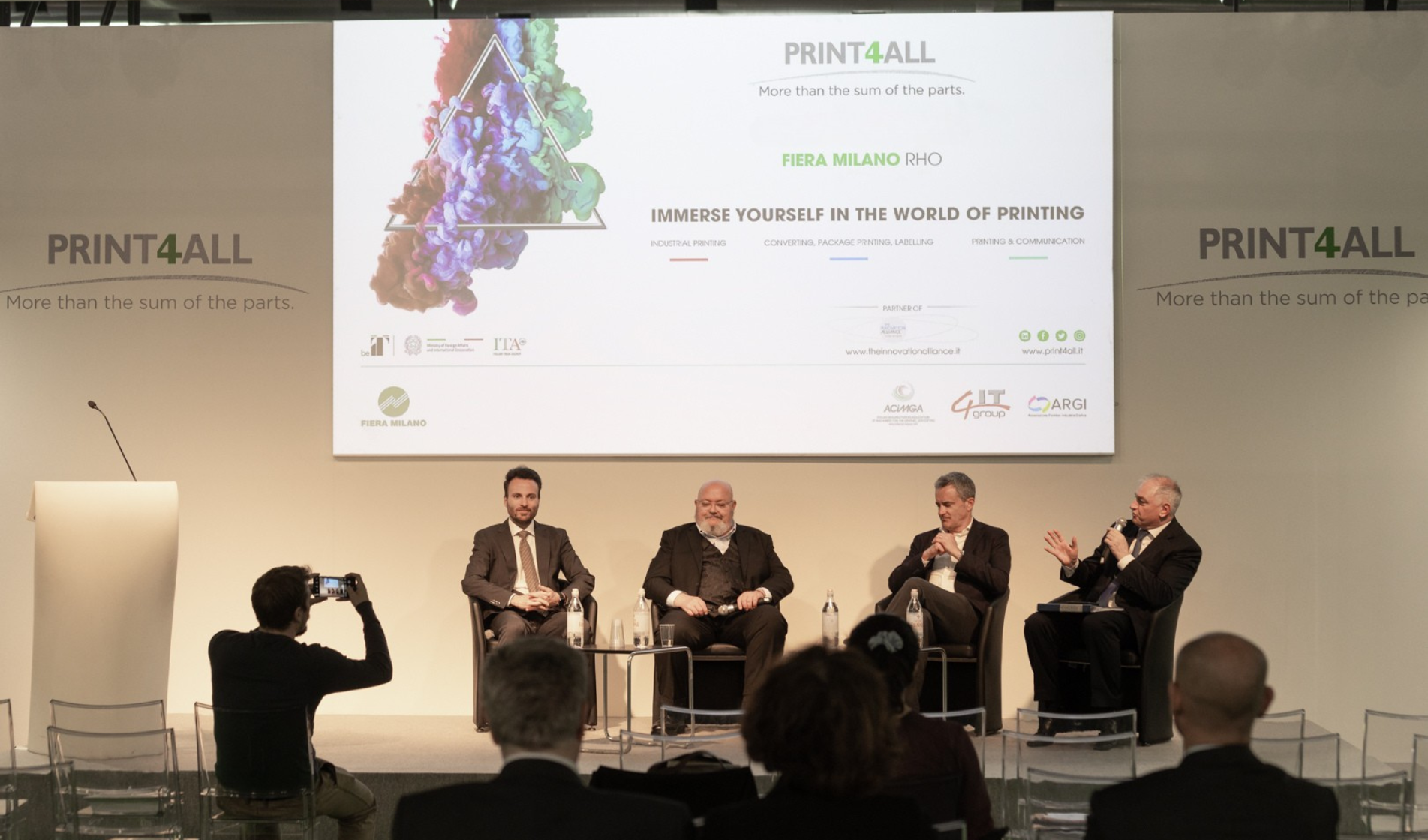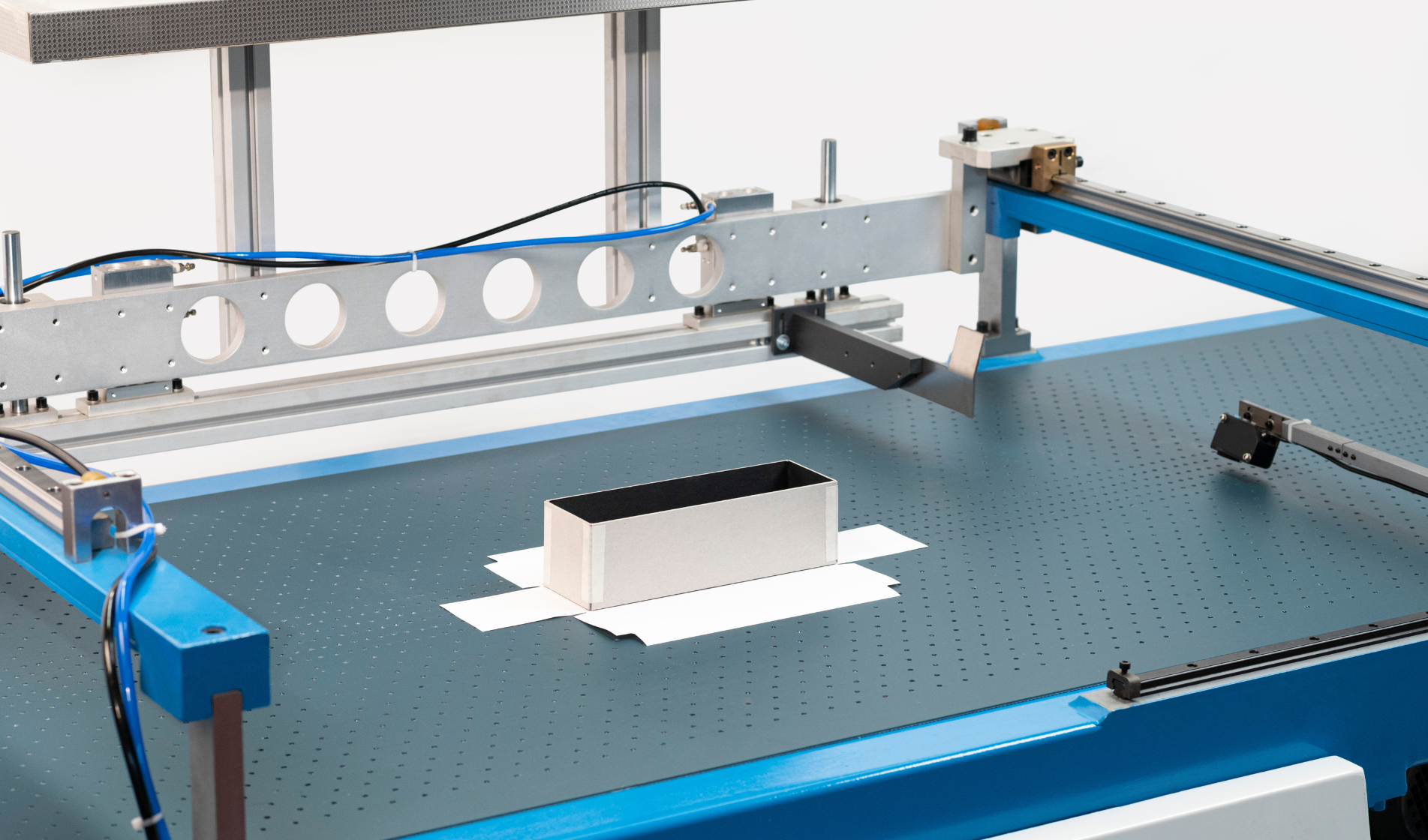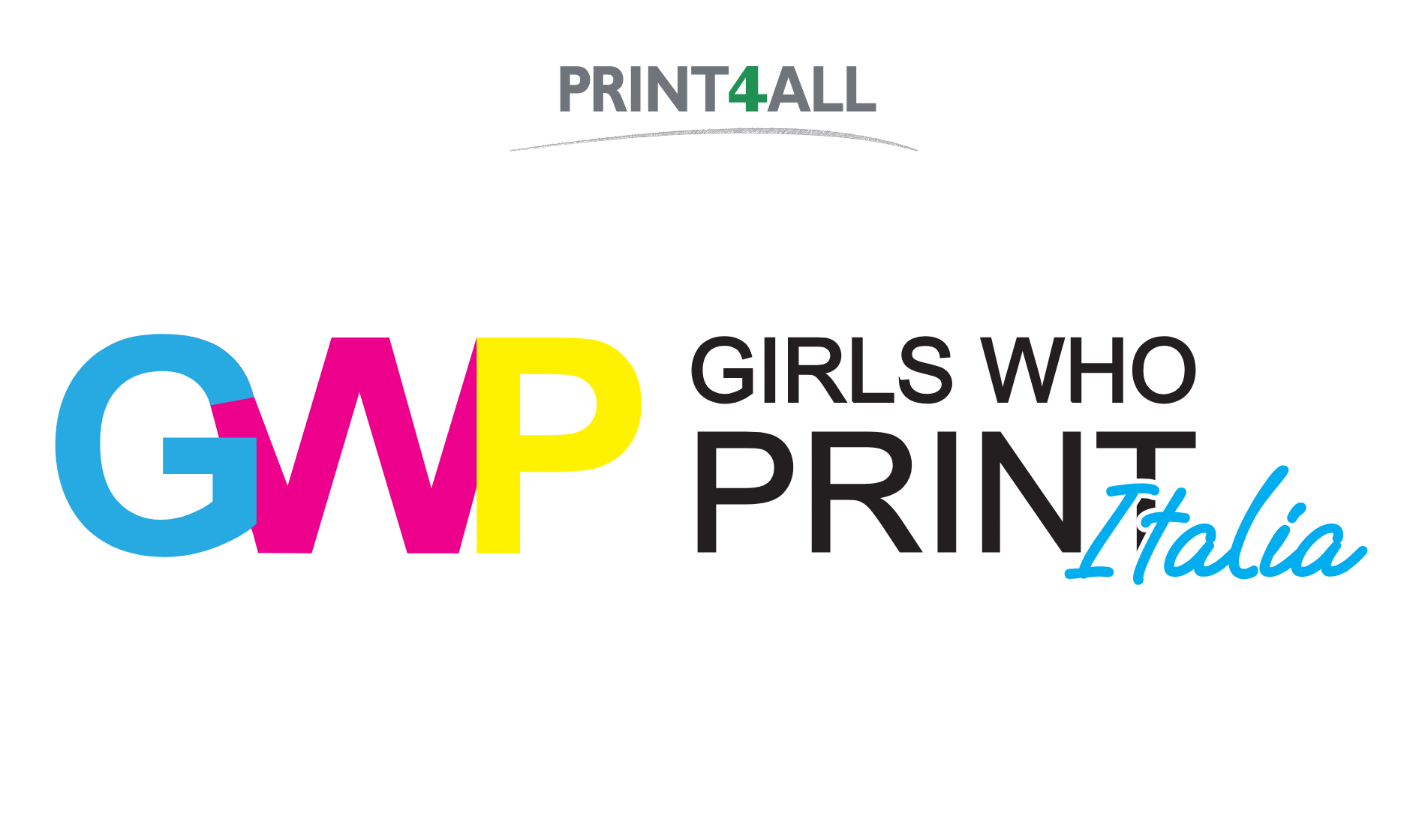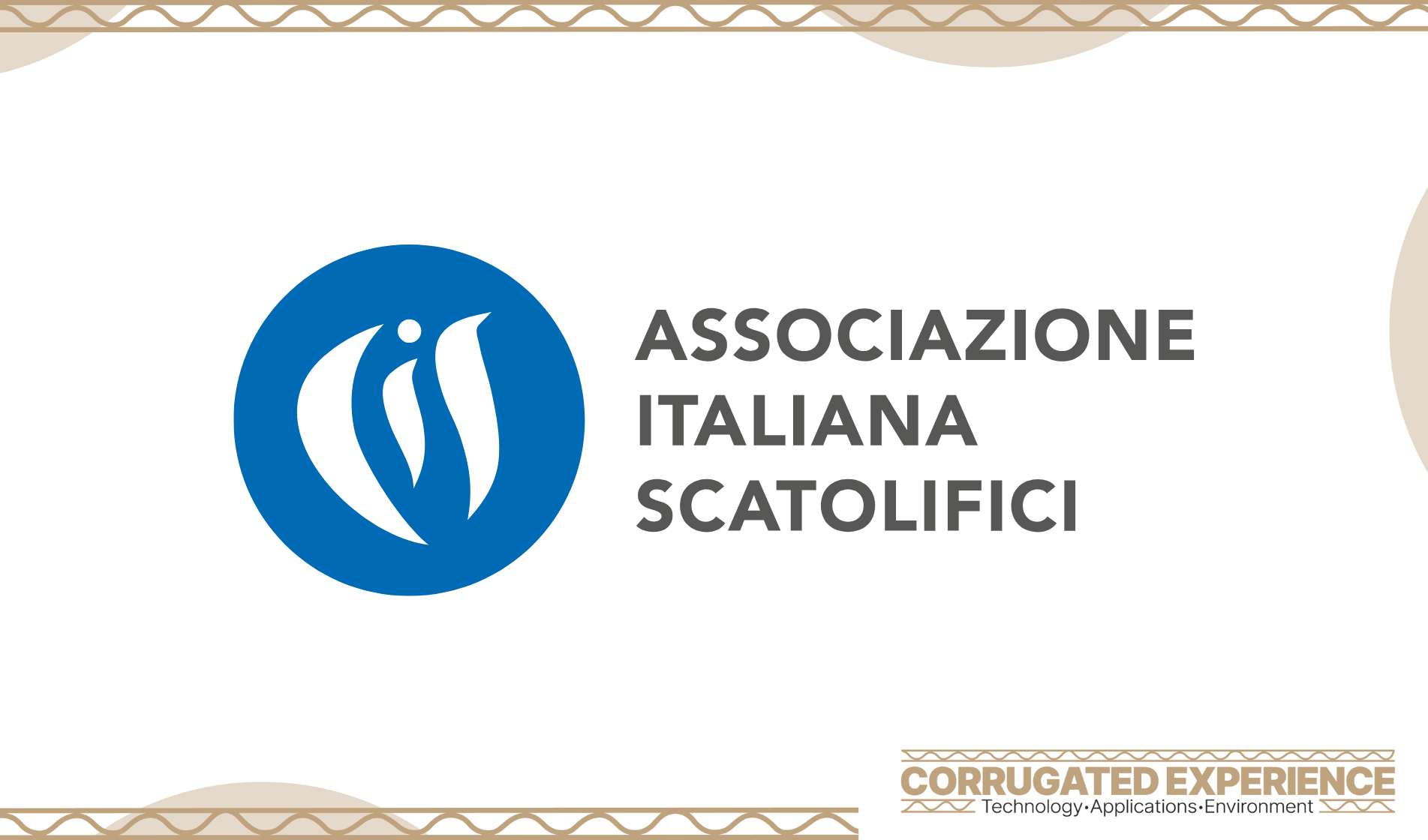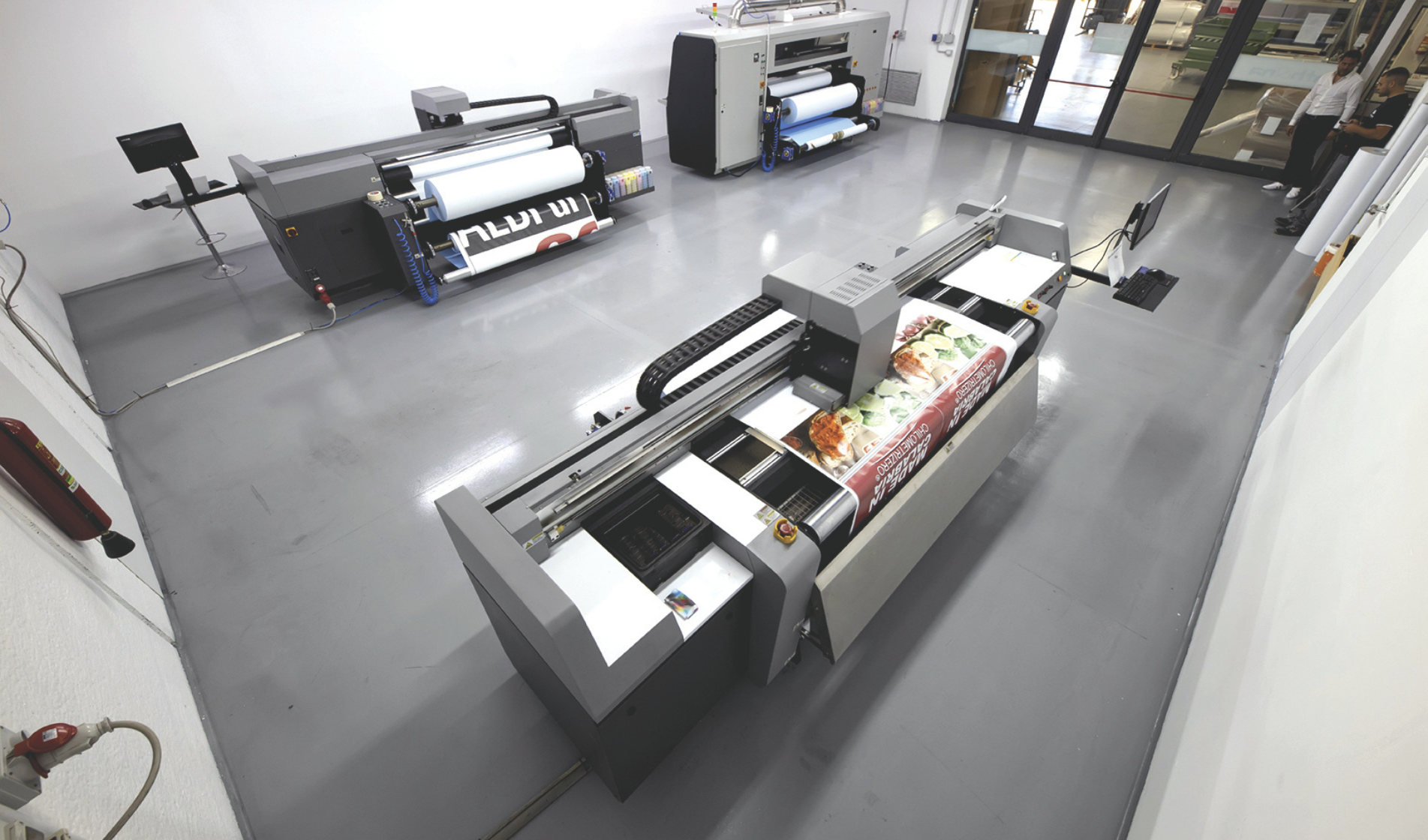The two-day “The Future at human service” event, attended by more than 150 operators in the auditorium and 700 connected via streaming, turned the spotlight on sustainability and the role of people in the world of printing, highlighting sensitivity, needs and potential, which will then be the focus of the Prin4All 2022 exhibition and training programme.
THE SCENARIO: TOWARDS NEW ECONOMIES
The change under way, indirectly accelerated by the pandemic, must be tackled by all supply chain stakeholders, by focusing on values - sustainability and people - that consumers now consider decisive in the purchasing process.
This development must be monitored and managed with a new collaborative logic and continuous dialogue. An example of this “open” approach is the collaboration between Acimga and VDMA, the two associations that represent manufacturers from Italy and Germany - the expression of manufacturing excellence. The two associations' willingness to cooperate has led to the creation of a round table and an export deal to guide manufacturers, associations and service providers in the two markets towards a single approach to recovery.
FUTURE DEVELOPMENTS AND THE ITALIAN PATH TO INNOVATION
In less than five years, digitisation will have a major impact on the way we do business and manufacture, by replacing routine tasks and enhancing human intelligence and inventiveness. With the development of Industry 4.0, we will grow from the current 35 billion to 75 billion networked devices.
This does not mean that the number of resources employed in the sector will change, but the way they work will have to change. Meeting the challenge of digitisation means training people to work differently, because there will no longer be any physical or temporal boundaries. Machines will be connected and queryable 24/7; a tremendous competitive and productive advantage if we are ready for it.
At this point in time, Italy has the opportunity to become a leading player in the change, but to do so it must adopt its model, which cannot be - because of our cultural characteristics - either the American model (extremely competitive) or the Chinese model (very top-down). We need an Italian approach to innovation, oriented towards a broader participation of all supply chain stakeholders in the change we are experiencing.
Today, the concept of a successful company has changed. We have moved from petrochemical giants to large digital platforms, which are the new top companies in our economy. This new way of doing business will affect all sectors, removing barriers between manufacturers, distributors and consumers. It is a spiral economy, in which we need to reinterpret relationships.
THE CHALLENGE OF SUSTAINABILITY
Together with digitisation, sustainability is the biggest change to be monitored, because it impacts all levels of the supply chain, from manufacturer to final consumer. This is an urgent challenge, since corporate responsibility is increasingly becoming a credibility lever for stakeholders, especially investors.
Consumers today are also increasingly aware: according to Ipsos data, in 10 years the number of consumers who are aware of sustainability has risen from 7% to 39%, but there is also greater sensitivity and commitment among individuals in the increasing search for “virtuous” practices.
Achieving sustainability goals - which is no longer just about impact on the environment, but extends to the concept of well-being and inclusion of diversity - requires constant collaboration between the various supply chain participants, but also among competitors. The individual's model will have to intersect with the work of others.
The transition will be expensive, which must be taken into account, but it can no longer be postponed and technology can become the best ally for managing resources and processes.
According to Nomisma, packaging, the first contact point for consumers looking for sustainable products, could make the difference in increasing sustainability levels. In fact, 55% of consumers are looking for products without over-packaging and 41% want them to be made of recyclable material. Moreover, 81% of consumers look at the label for information on how to recycle packaging correctly.
The world of packaging can and must aim to be increasingly sustainable - in Italy it currently accounts for 211.2 kg/capita, against a European average of 174.6 kg/capita - but at the same time it is what best illustrates the sustainable commitment of our companies, given that the recycling rate in Italy is 66.3%, putting us in third place among the most virtuous countries in Europe (source: Eurostat).
This is a challenge that the sector must take up, considering the centrality of sustainability in the National Recovery and Resilience Plan: 69 billion will be allocated for the ecological transition and the word sustainability is mentioned 465 times in the document.


